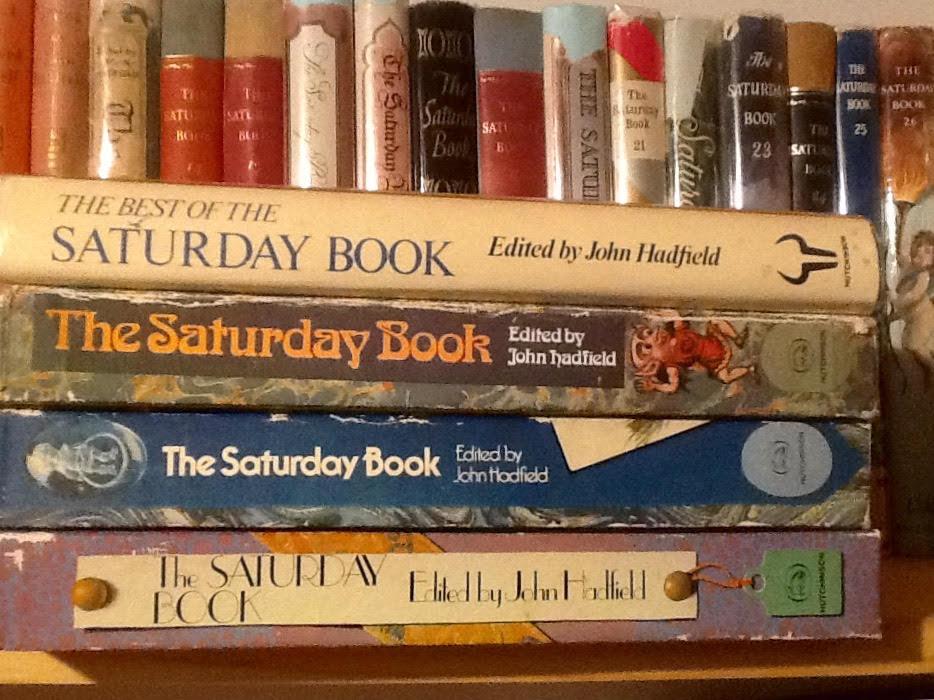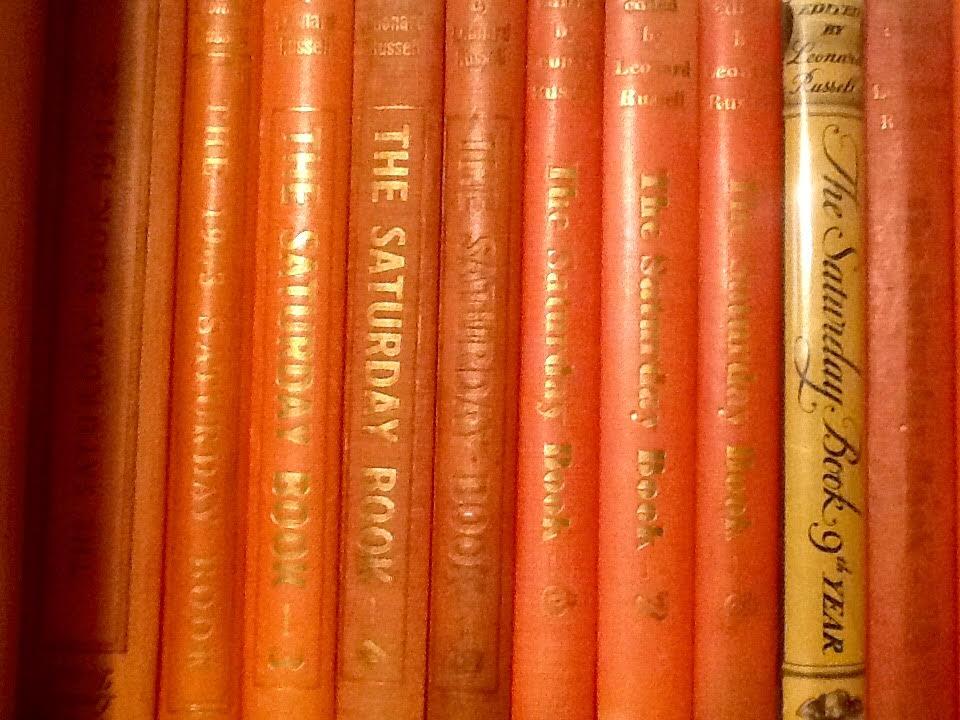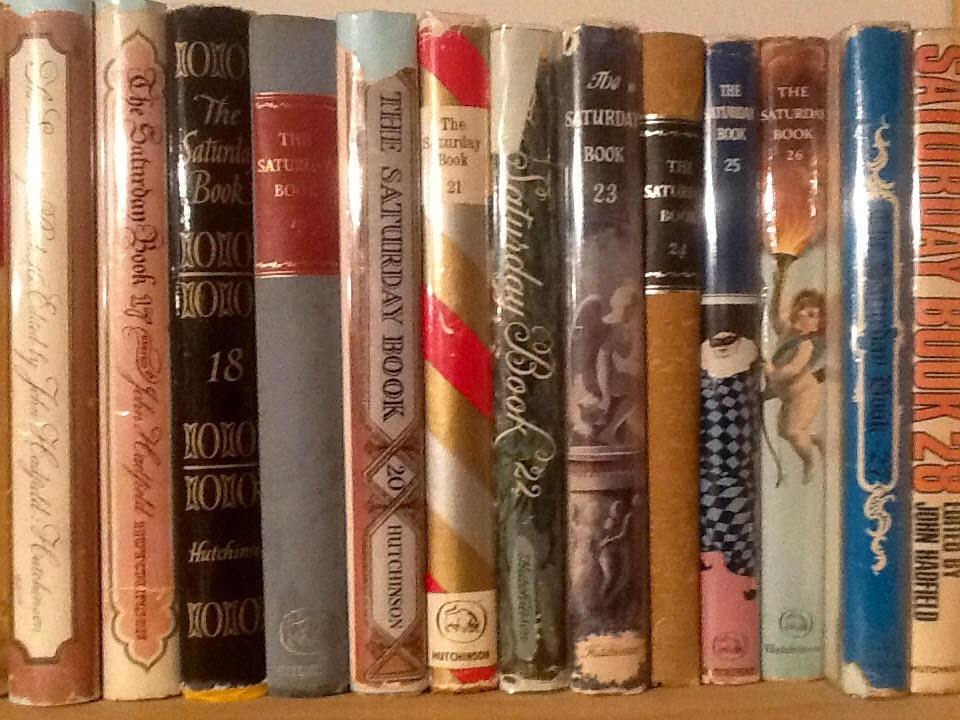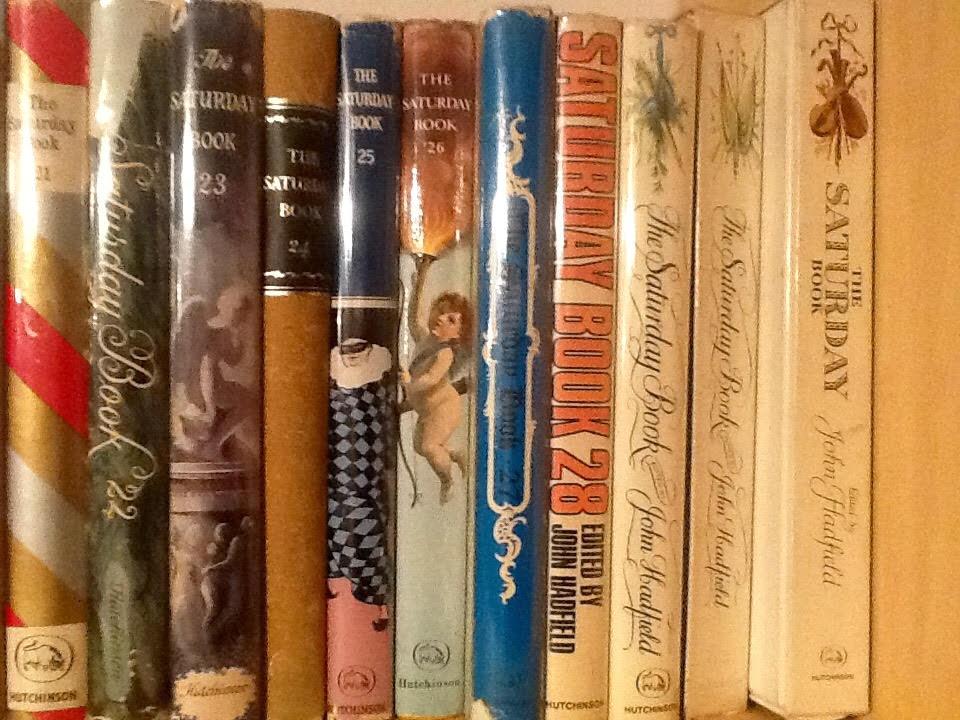
The Saturday Book. Set of 34 volumes over the period 1941 to 1973 + one later "best of". The Saturday Book was an annual anthology or miscellany celebrating British life, culture, humour, art, photography, literature , fashion , antiques, short stories and much more. You name the theme over the years there was likely to have been a high quality article. It dates from the dark days of the Second World War when Leonard Russell (later from 1952, John Hadfield was the editor) gathered contributions from everyone who was anyone, across the rich seams of British arts to celebrate survival against the wartime odds. This publishing phenomenon continued after the war and became a British institution.
Price for 35 volumes... I suggest a modest R70 a volume, sold as a set. It is a bargain offer but I need to clear space and I can't keep two sets. Must be collected in Johannesburg . Email - kathy@zimstone.co.za
The books came out every year around about Christmas time and made the perfect cheering and cheerful seasonal present. They were well produced in hard cover... Initially the cloth covers were of a striking orange, later still hard cover but with well designed dust wrappers added and later still the book was presented in a specially designed book box. Originally they were masterpieces of black and white book design but from No 4 (1945 ) colour illustrations were introduced.
The title "Saturday Book" suggested weekend light relaxation. They were popular from the start and the 2nd volume sold 10,000 copies. They were meant to be instantly collectable. Remarkably the publication continued for 34 years with a final last celebration, a 35th book, as The best of the Saturday Book, appeared in 1981. These books were popular around the English reading world and turn up in the USA, Australia, New Zealand and South Africa.
The series as a whole reflects the literary and popular culture of the middle decades of the 20th century. The books (nos 1-11) were designed by the artist Laurence Scarfe and he gave the series that characteristic quirky character.
Many well known authors contributed to the Saturday book and included James Agate, H E Bates, John Betjeman, Edmund Blunden, Walter de la Mere, Robert Graves, Graham Green, Laurie Lee, Philip Larkin, Compton Mckenzie, John Masefield, H J Massingham, J B Priestley, L T C Rolt, Bertrand Russell, Siegfried Sassoon, Osbert Sitwwell, Evelyn Waugh, and P G Wodehouse. Olive Cook and Edwin Smith contributed the many pictorial miscellaneous of rare and beautiful antiques and Laurence Whistler's Diamond point engraving on glass made for exquisite black and white plates of his art glass. There are wonderful fashion photographs by Cecil Beaton
The series was profusely illustrated with photographs, woodcuts and line drawings, many specially commissioned. Artists included Edward Ardizzone, Roland Emmett, L. S. Lowry, Ronald Searle , Lawrence Scarfe and Richard Chopping. Photographers included Bill Brandt, Cecil Beaton, Douglas Glass and Edwin Smith. Wood engravers included Robert Gibbings, George Maclay and Agnes Miller Parker. The visual appeal through its illustrations and plates that made the Saturday book.
Early Saturday books
The strangest publishing story about the Saturday book, was the fate of George Orwell's essay "Benefit of Clergy, some notes on Salvador Dali" intended for the 3rd volume published in 1944. It was suppressed on grounds of obscenity, but its title remains in the table of contents, the Orwell essay is simply missing.
Length... The very first volume, 1940/41, totaled 444 pages, but, thereafter during the Second World War, paper was rationed and, the second volume was only 274 pages. From the third to the 24th volumes the number fluctuated between 288 and 304 pages; in the last decade of publication the number of pages dropped sharply to about 256 pages, with the last volume at 240 pages.
These are eccentric and much loved books. The Saturday Book never set out to be a literary influence, but it did both reflect and shape British taste and led the way in celebrating Art Deco or an appreciation of say industrial archaeology, or promoting the delights of vintage postcards. And here they were ahead of popular trends. You won't find any contributions on economics, politics or science. Bevis Hillier in his review of the final volume for 1973 called the Saturday book "a sampling-flask of the nation's subconscious "or James Laver talked about "a Saturday book mind" (see the introductory essay on the best of the Saturday Book). It always has the feel of alternative culture, quirky, appealing, erudite, stylish, entertaining, perhaps "the music hall of book production". As a collection the books reflect the social history of Britain of the middle decades of the 20th century.
In 2002 Nekta Publications published What's Where in The Saturday Books: A Comprehensive Guide and Index by Peter Rowland, 154 pages long, which provides an index and guide to the whole series (this volume is hard to come by and I do not own a copy). There was also the 1955 book by Edwin Smith and Olive Cool of their own contributions to the series , Collectors ' Items from the Saturday Book (not included in this offer).
There was never any intention to turn them into a colonial or colonizing endeavour, they reflect rather a English way of life with that dry humour, somewhat Monty Python, or stiff upper lip attitude to war and post war hardships and a quirkiness that I always associated with my father who came from Gloucestershire and who was in the Royal Air Force and survived the Second World War .
My Dad collected the entire set and then I too collected a set of Saturday books. When he passed on, I came to own two sets ... Hence now my decision to sell a complete set. One encounters the Saturday book every now and again but the challenge was to build a complete set and to find the first (fairly rare) two or three volumes... Which we did by hunting these down (in pre internet days) in book shops in remote English villages. Hutchinsons was the publisher throughout. The 34 +1 volumes could not be bought as a set. I think if one started to collect this series now, the chances of assembling all 35 volumes are quite low. We gathered our two collections over 45 years. This is a series that will give you hours of pleasure .
There were other books that fell into much the same genre but were imitations of the Saturday for example the Compleat Imbiber edited by Cyril Ray, John Hadfield also edited the series a Book of Love , a Book of Beauty. , ... But none came up to the level or longevity of the Saturday book. Perhaps the closest parallel was the Yellow book of the 1890s , but that series was in an earlier and more literary tradition.
By 1974 the Saturday Book series had run its course or out of financial steam. Alas there were no more annual Saturday books at Christmas time. The economics of producing a beautiful book in a well designed box no longer made publishing sense. Inflation and rising costs of producing a stunning volume, cut into profits, instead of £1 the price rose to £7 and for the "best of book", by 1981, £12.95. There was more competition for coffee table books. Anthologies fell out of fashion. The last Saturday book came out in 1973. Now some 4 decades later the Saturday book has passed into the highly collectable category. The unusual aspect is the opportunity to purchase the complete set.
There was an attempt by Eric Rosenthal to produce a South African Saturday book in about 1947 but only one volume appeared and the quality and feel of the English series was missing. It must have been a publishing failure as there never was a second.
Disclaimer: Any views expressed by individuals and organisations are their own and do not in any way represent the views of The Heritage Portal.



